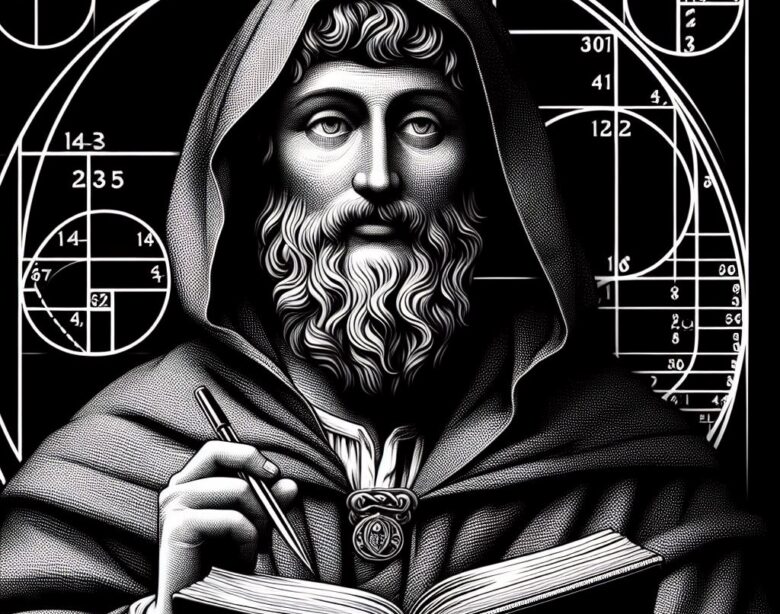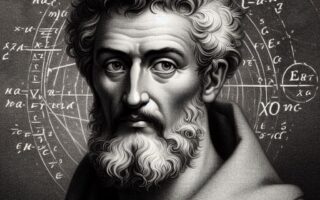Leonardo of Pisa, more commonly known as Fibonacci, was a remarkable mathematician who lived during the Middle Ages and made groundbreaking contributions to mathematics that continue to influence our lives today. In this article, we’ll explore various aspects of Fibonacci’s life, work, and enduring legacy.
Fibonacci’s Life in the Middle Ages
Fibonacci lived in the 12th and 13th centuries, a period known as the Middle Ages. During this era, Europe was characterized by a feudal society, where social classes were sharply divided. Life was challenging, with limited access to education, basic healthcare, and rudimentary sanitation systems.
Fibonacci was not born into nobility. He belonged to the merchant or commercial class, the bourgeoisie. His father, Guglielmo Bonacci, was a merchant in the city of Pisa, Italy. Despite his non-noble background, Fibonacci’s natural talent for mathematics became evident at an early age. It is believed that he received his early mathematical training in relation to merchant training.
His Travels
One of the most significant aspects of Fibonacci’s life was his extensive travels. He journeyed throughout the Mediterranean, North Africa, and the Middle East. During his travels, he encountered various mathematical and numerical systems, which greatly influenced his mathematical education and later work.
Hindu-Arabic Numerals and Decimals
Fibonacci’s most famous work, “Liber Abaci” (The Book of Calculation), published in 1202, introduced Europe to the Hindu-Arabic numeral system and the decimal number system. Prior to this, Europe primarily used Roman numerals, which were less efficient for calculations. Fibonacci’s book revolutionized mathematics and commerce by making arithmetic more accessible and efficient.
The Fibonacci Sequence
In “Liber Abaci,” Fibonacci introduced the Fibonacci sequence, a series of numbers where each number is the sum of the two preceding ones. This sequence, starting with 0 and 1 (0, 1, 1, 2, 3, 5, 8, 13, 21, and so on), has fascinated mathematicians for centuries due to its intriguing mathematical properties. It is also prevalent in nature, art, and various mathematical applications.
- Phyllotaxis: Phyllotaxis is the arrangement of leaves on a plant stem or seeds in a pinecone or sunflower head. Many plants exhibit Fibonacci spiral patterns in the arrangement of their leaves or seeds. Each new leaf or seed is typically positioned at an angle approximately 137.5 degrees (a Fibonacci number) from the previous one, leading to the formation of spiral patterns.
- Flower Petals: Certain flowers, such as daisies, sunflowers, and pineapples, have petals that follow Fibonacci numbers. Fibonacci numbers are any numbers that exist in the sequence. For example, lilies often have three petals, buttercups have five, and daisies can have 21 or 34 petals, all Fibonacci numbers.
- Pinecones: The spirals in a pinecone’s arrangement of scales often follow Fibonacci numbers. You can count the spirals in one direction and then the other, and the numbers are usually consecutive Fibonacci numbers.
- Fruit and Vegetables: Some fruits and vegetables, like pineapples and pinecones, also exhibit Fibonacci spirals in their arrangement of scales or seeds.
- Animal Breeding: In some animal populations, you can observe Fibonacci-like patterns in reproduction. For instance, if you start with a pair of rabbits (male and female), and each pair reproduces monthly, the number of rabbit pairs each month follows a Fibonacci sequence.
- Seashell Spirals: Certain types of seashells, such as nautilus shells, exhibit spiral growth patterns that approximate Fibonacci spirals. The growth of the chambers in the shell follows this pattern.
- Hurricanes and Spiral Galaxies: On a much larger scale, hurricanes and spiral galaxies often exhibit spiral patterns that are related to the Fibonacci sequence, demonstrating the ubiquity of these patterns in the universe.
- Human Body: Although not as pronounced as in some other examples, the proportions in the human body can sometimes approximate Fibonacci ratios. For instance, the proportions of the sections of a finger, from the tip to the first joint and from that joint to the base, can be close to the golden ratio, which is related to Fibonacci numbers.
These examples illustrate the widespread occurrence of Fibonacci-like patterns in the natural world, suggesting that the Fibonacci sequence and the golden ratio are fundamental principles underlying the growth and arrangement of living organisms and even inanimate objects.
What You Can Blame Fibonacci for Having to Learn
Fibonacci’s legacy in education is profound. Today, elements of his work are integrated into all levels of mathematical education. Some of these include:
- The Use of Hindu-Arabic Numerals: Thanks to Fibonacci’s efforts, Hindu-Arabic numerals are now the standard numeric notation used worldwide, simplifying mathematics education and calculations.
- Decimal System: The decimal system, introduced by Fibonacci, is the foundation of modern arithmetic.
- Advanced Mathematics: The math that we study beyond arithmetic, Algebra and Calculus, is predicated on the use of Hindu-Arabic Numerals.
- Fibonacci Sequence: The Fibonacci sequence is a fundamental concept taught in mathematics, showcasing the beauty of patterns and mathematical relationships.
In Conclusion
Leonardo of Pisa, or Fibonacci, was a mathematician who transcended his social status to become one of the most influential figures in the history of mathematics. His travels, dedication to learning, and pioneering work in introducing Hindu-Arabic numerals and decimals to Europe laid the foundation for modern mathematics and education. The enduring legacy of Fibonacci’s contributions continues to shape our world, from everyday calculations to the intricate beauty of mathematical patterns. Fibonacci’s journey through the Middle Ages serves as a testament to the power of knowledge and its ability to transcend social boundaries, leaving an indelible mark on human history.








